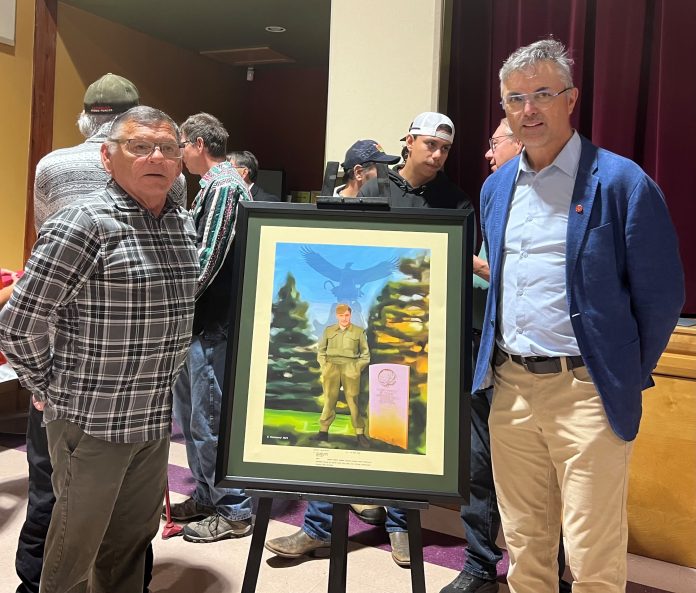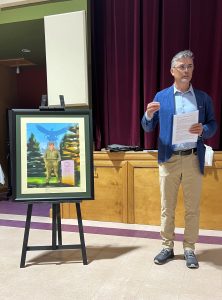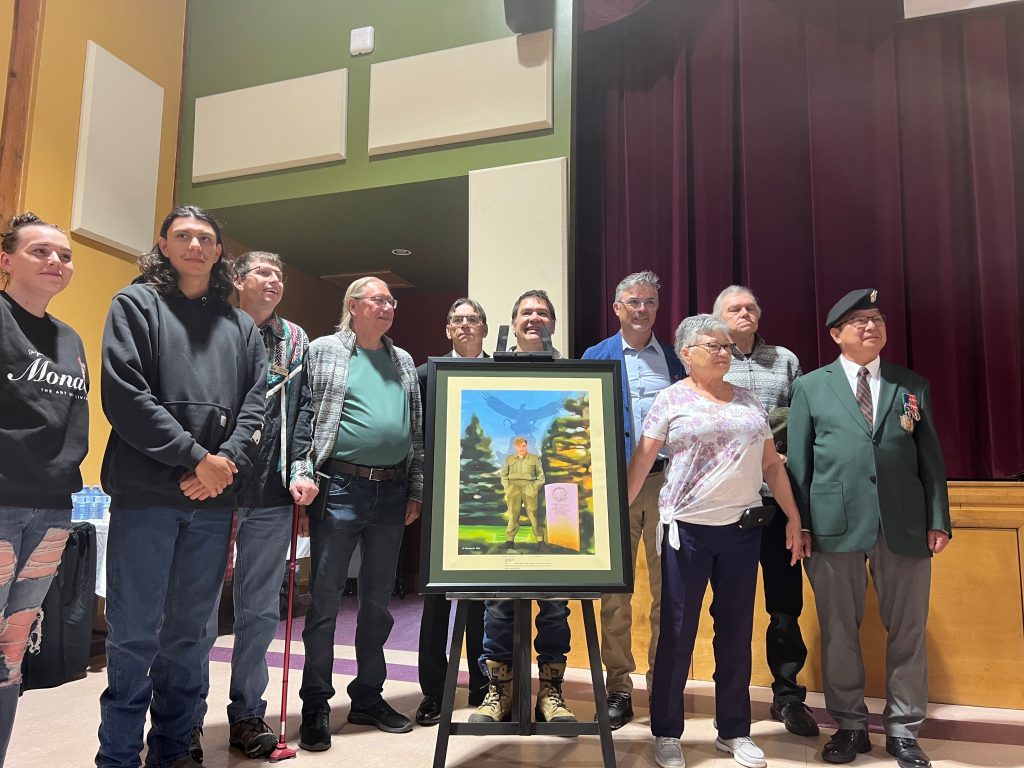
Muskoka Artist Greg Hammond presented his piece “Honouring Herman Stock” to Chief Phillip Franks of Wahta First Nation on Saturday, June 8.
“Honouring Herman Stock” is a tribute that captures the spirit, valour and legacy of a young man from the Wahta First Nation who was killed 80 years ago on D-Day, when he landed on Juno Beach during the liberation of France. In an emotional presentation attended by members of the Wahta Community including a number of relatives of Herman Stock, a representative of the Queen’s Own Rifles of Canada (Stock’s former regiment) and members of the general public, Hammond discussed Stock’s service, the D-Day landing and the impact of his death on his family and community.
At a time when there were only about 100 residents of Wahta, over two dozen men and women from Wahta served in the Canadian military during World War II. Herman’s brother Harry served overseas in WWII and their father Robert served in the First World War and again in the Home Guard in the Second World War.
Hammond described that after visiting Beny-Sur-Mer Canadian Military Cemetery a few years ago Herman Stock “connected” to Hammond through books and videos that mentioned the soldier. “I felt compelled to do this piece in his memory,” he said.
This memorial comprises several elements, each filled with symbolism and meaning.

The central figure of the memorial is Herman Stock, a powerful young man full of life, dreams and hopes. His carefree demeanour contrasts with his battle dress uniform, capturing the essence of his youth and the gravity of his service, highlighting the personal sacrifices made by those who serve.
Herman Stock’s Gravestone serves as a stark reminder of the ultimate sacrifice made by Herman Stock. The Maple Leaf signifies his Canadian identity, and the date June 6, 1944, marks D-Day, a pivotal moment in the Liberation of Europe in World War II. This contrast between his youthful image and his gravestone underscores the profound loss felt by his passing.
The Beny-Sur-Mer Canadian War Cemetery, though beautiful, is far from Wahta First Nation. Representing the forests of his homeland, this element symbolizes bringing Herman back to his roots. By placing Herman in a familiar forest setting, the memorial connects him to his ancestral heritage and the land he loved.
Silhouetted in the background, the National Aboriginal Veterans Monument reflects traditional Indigenous values of honour, duty and harmony with the environment. The Thunderbird atop the sculpture represents the Creator and embodies the spirit of Canada’s Aboriginal peoples. This connection honours Herman Stock while recognizing the broader contributions and sacrifices of all Aboriginal veterans.
The Telegram to Mary Stock highlights the personal and communal loss experienced by Herman’s family and community. The telegram announcing his death is a poignant reminder that his sacrifice was shared by his loved ones. It symbolizes the collective grief and the impact of his loss on the Wahta First Nation and beyond.
Together, these elements create a memorial that honours Herman Stock’s memory celebrates his heritage and acknowledges the broader sacrifices made by Indigenous veterans and their communities.








